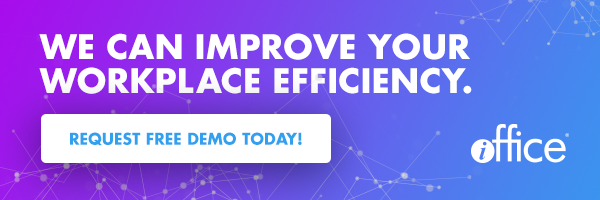Facilities Management Measurement: Where Are You Stuck?


Being a facilities leader is the ultimate juggling act—ensuring space is utilized efficiently, employees have the resources they need to be productive and the C-suite has appropriate metrics to plan for the future, all at the same time. But staying on top of these tasks is next to impossible without the right software to collect and organize workspace and workforce data and translate that data into action.
Unfortunately, even with software some facilities leaders feel as if their day-to-day routine is too chaotic. Somewhere along the way, the systems they put into place fell short, and they’re missing the insight they need to effectively do their job.
5 Stages of Facilities Managment Measurement
Let’s take a look at the five stages of facilities management measurement to identify where facilities leaders can get stuck and what can be done to get unstuck.
 Stage 1: Your Reporting and Tracking Systems are Siloed
Stage 1: Your Reporting and Tracking Systems are Siloed
Your business took the first step and invested in multiple solutions to help manage space, employees and assets. But none of the systems are integrated, which means seeing the big picture is difficult and sometimes the data is inconsistent. You receive separate communications for every new hire, facility work order and move request and have no central database where this information can be housed and cross-referenced.
What do you need?
A way to effectively organize the data generated by each system.
Stage 2: You Create a Consolidated Reporting Process
To address the lack of organization resulting from disparate systems and reports, you develop a master spreadsheet to organize and store data for better facilities management measurement. All the information is in one place, and it’s easier to review.
But a spreadsheet requires manual updating, and the busier you get, the less likely you are to keep it up to date. You also risk making a data entry mistake, which could hurt future decisions.
What do you need?
Data automation, which can only be achieved when all systems are configured to work collaboratively.
Stage 3: You Implement an Integrated Workplace Management System (IWMS)
Your organization adopts an integrated work management system (IWMS), which consolidates each system (and all the related data) into one centralized database. The software automatically captures employee and workspace data, generates reports and makes it easy to review how each part of your facility operates, both independently and collectively. With this degree of visibility, you can make confident decisions.
But when it comes to planning for the future, you’re making a lot of assumptions.
What do you need?
More data collected over a longer period of time to accurately plan ahead.
 Stage 4: You’ve Collected Historic Data to Use for Short-Term Forecasting
Stage 4: You’ve Collected Historic Data to Use for Short-Term Forecasting
The IWMS has been in place for a few months, and you now have historical data to leverage. You’ve been able to determine a baseline, establish facilities management measurement goals and provide the C-suite with valuable insight to drive future decisions. In addition, you’re using this data to improve space utilization, track resources, field employee service requests and monitor expenses. But you’re still struggling to accurately forecast future needs.
What do you need?
Multiple quarters worth of data to build a preventative maintenance schedule that reduces the risk of unexpected issues.
Stage 5: You’ve Acquired Sufficient Data to Support Predictive Modeling
Once the IWMS has been in use for several quarters, you should have enough data to make accurate predictions about the future needs of your workspace and employees. You’ll also be able to identify operational inefficiencies and create a proactive maintenance schedule to help prevent unexpected issues. At this point, you’ll likely feel more in control of your responsibilities as facility manager.
What do you need?
Nothing—you’re in good shape.
Adopting the right system to effectively manage facilities, employees and assets is mission critical if organizations are to remain lean and competitive. It’s important to keep in mind that the benefits of an IWMS won’t be realized overnight. If you’ve implemented the correct solution and still feel stuck, you might just need to give your IWMS additional time to collect data. The more information you have and the better organized it is, the more successful you’ll be at managing your facility.
Wondering exactly which data you should be tracking? Download the free eBook, 8 Metrics Every Facility Manager Should Track, to make sure you have the right information to make data-driven decisions.
